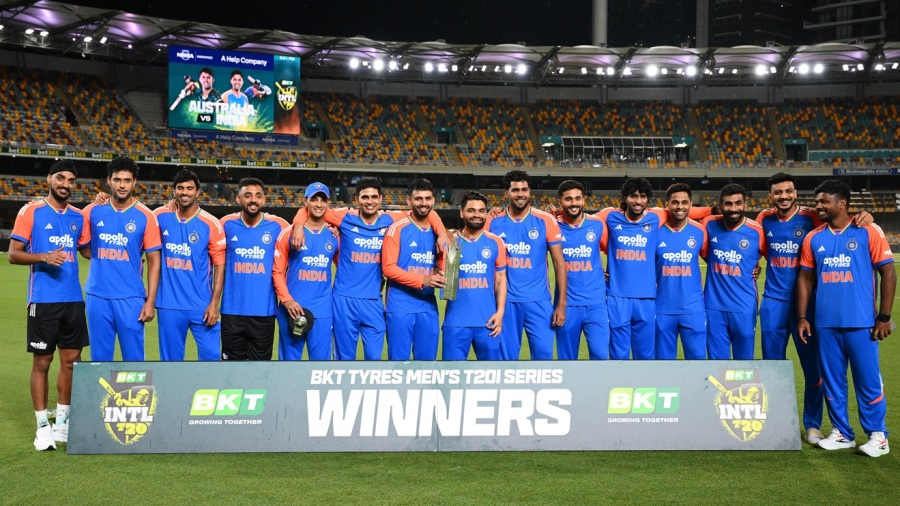In a high-quality final, the world No.4 finished just ahead of her countrywoman and Paris 2024 finalist Sun Jiaqi, who claimed silver with a best score of 93.08.
Fan Xiaotong picked up the bronze with 92.10 to complete the Chinese one-two-three,…

In a high-quality final, the world No.4 finished just ahead of her countrywoman and Paris 2024 finalist Sun Jiaqi, who claimed silver with a best score of 93.08.
Fan Xiaotong picked up the bronze with 92.10 to complete the Chinese one-two-three,…

While Laika, the Soviet dog, is often remembered as the first animal to orbit Earth in 1957, France soon followed with its own historic mission. According to NASA, on October 18, 1963, French scientists launched the first cat, Félicette, into…

Originally appeared on E! Online
If you seek Britney Spears, look no further than her social media channels.
After briefly deleting her Instagram account, the “Me Against the Music” singer returned to the platform Nov. 7 with a message about…

Stay informed with free updates
Simply sign up to the UK energy myFT Digest — delivered directly to your inbox.
Britain’s energy regulator has given one of the largest household suppliers more time to meet its capital buffer target in an effort to relieve pressure on the company.
Ofgem has told Ovo that as long as it is working towards the objective it will be given the breathing space, according to people familiar with the matter.
The targets have been in force since March to try to avoid a repeat of the energy crisis that began in late 2021 when around 30 suppliers collapsed because they could not withstand surging gas prices.
The move will give Ovo more time to speak to potential investors about fundraising, but is likely to stoke anger among the company’s rivals which have already met their targets.
One person close to the situation said that Ovo was working on a new business plan that would satisfy Ofgem. The regulator is taking a constructive approach to Ovo’s negotiations, they said.
Ovo, founded by the entrepreneur Stephen Fitzpatrick, serves around four million UK households.
The rules require companies to hold a certain amount of cash or other assets per customer in a bid to cushion them from wholesale price volatility or other market surprises.
Companies must be above a capital buffer “floor” and meet or be working towards a “target” level. If they are not yet meeting the target level, they have to agree a plan with Ofgem for how to achieve it.
One person familiar with the situation said that Ovo could be a profitable business but the “pressure the regulator was putting on the firm was becoming a self-fulfilling problem”. They added that it made it harder to raise funds from investors as they considered it “dead capital” that had lower returns than a guaranteed profitable infrastructure investment.
Ofgem’s rules say the plan must be “time-bound with a defined end date”.
Ovo admitted last month that it is one of three companies that is yet to meet the capital target, alongside Octopus, the UK’s largest household energy supplier and one other company that has not been named.
In September it warned in its annual accounts that there was a “material uncertainty” over its ability to continue as a going concern, due to uncertainty over the “timing and extent” of its capitalisation plan.
“Certain elements of the plan are outside of the control of the group,” the company said. It has been talking to investors about another fundraise but so far this has not materialised.
This week, the chief executive of the company’s household retail unit David Buttress resigned, along with his former finance chief James Davies, who held the same role at Monzo before joining Ovo in October 2024.
Ofgem is keen to avoid pushing Ovo into a corner through the capital adequacy rules when it is passing monthly financial stress tests, according to people familiar with the matter.
However, rivals are likely to view the regulator’s move as giving an unfair advantage to companies which have not saved the cash to meet their capital targets.
One industry figure said it was “outrageous behaviour” by Ofgem.
In a post on LinkedIn this week, Centrica’s chief executive Chris O’Shea said the capital requirements are “not being implemented consistently or transparently” and called on Ofgem to “act urgently to protect consumers and provide transparency”.
Ofgem declined to comment.

India’s brilliant bowling performances, bamboozling Australia with spin, in Hobart and the Gold Coast has turned the series on its head. Josh Hazlewood’s stranglehold of India’s…

– Advertisement –
ISLAMABAD, Nov 8 (APP): Health experts have revealed that taking daily doses of Vitamin D can significantly help lower high cholesterol levels, reduce the risk of hypertension and diabetes, and improve insulin production in the…

Although CHD is the most frequent…